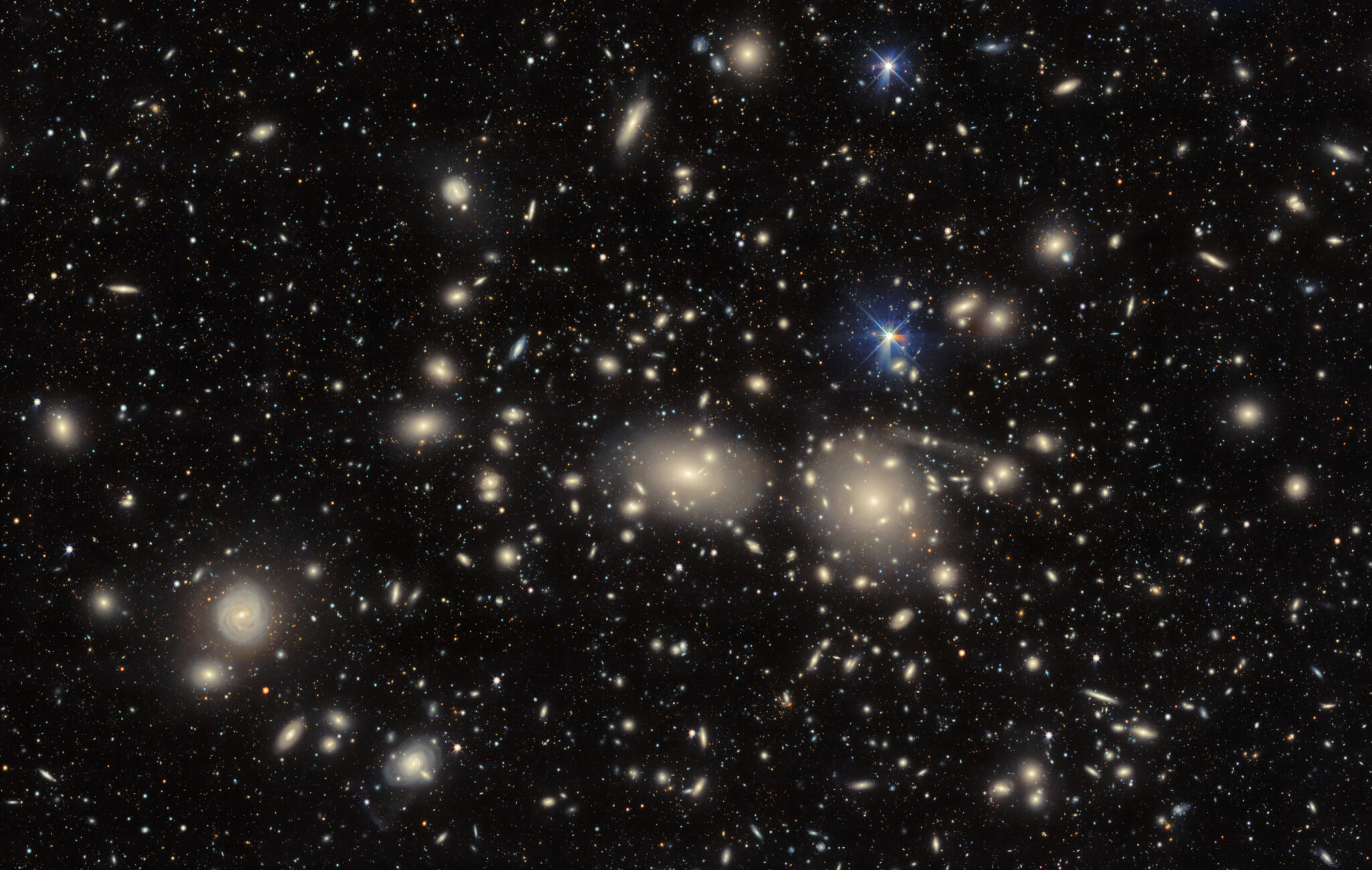Employees of the NOIRLab research center have published a new image obtained by the Dark Energy Camera (DECam). It shows the galactic cluster Coma Cluster.

Coma Cluster is located approximately 330 million light-years away from Earth toward the constellation of the same name. It has a diameter of about 50 million light-years and is home to more than a thousand identified galaxies.
The constellation that gave the cluster its name is curious because it is the only one named in honor of a real-life person — Berenice (Veronica), wife of Egyptian King Ptolemy III (3rd century BC). When her husband went on a military expedition, she cut off her hair and placed it in the temple of Aphrodite. According to legend, the hair disappeared mysteriously and the court astronomer explained that it was placed in the sky and became new stars. Later, the name Coma Berenices stuck to them, which over time was taken over by the constellation.
But Coma Cluster is interesting not only for its name, but also for its contributions to science. In 1937, Swiss astronomer Fritz Zwicky calculated its mass and got a paradoxical result. The observed mass of the cluster was 400 times lower than necessary to keep the galaxies from flying apart. This contradiction led to the emergence of the hypothesis of the existence of some hidden mass: an invisible substance that didn’t emit any electromagnetic radiation and gave itself away only by gravitational influence on celestial bodies. Nowadays, the term dark matter is commonly used to describe it.
It took astronomers decades to be convinced that Zwicky was right. The consensus changed after a number of studies appeared that reported the same curious mass discrepancy, but on the scale of individual galaxies rather than whole clusters. One such study was conducted in 1970 by American astronomers Kent Ford and Vera Rubin, who found evidence for the existence of invisible matter in the Andromeda Galaxy. And in 1979, astronomers Sandra Faber and John Gallagher conducted a detailed analysis of more than 50 spiral and elliptical galaxies, as a result of which they also came to the conclusion about the existence of dark matter.
The image of the Coma Cluster was obtained with the Dark Energy Camera, which is one of the most advanced astronomical instruments of our time. It collects light reflected by the 4-meter mirror of the Victor Blanco telescope and passes it through its interior, including a meter-long corrective lens. Then it is captured by a grid of 62 devices with extremely sensitive CCDs. They allow DECam to produce detailed images of faint astronomical objects and reveal subtle patterns of cosmic structure caused by the influence of dark energy and dark matter.
Earlier we talked about how observations of distant quasars could help astronomers solve the mystery of dark matter.
According to NOIRLab


